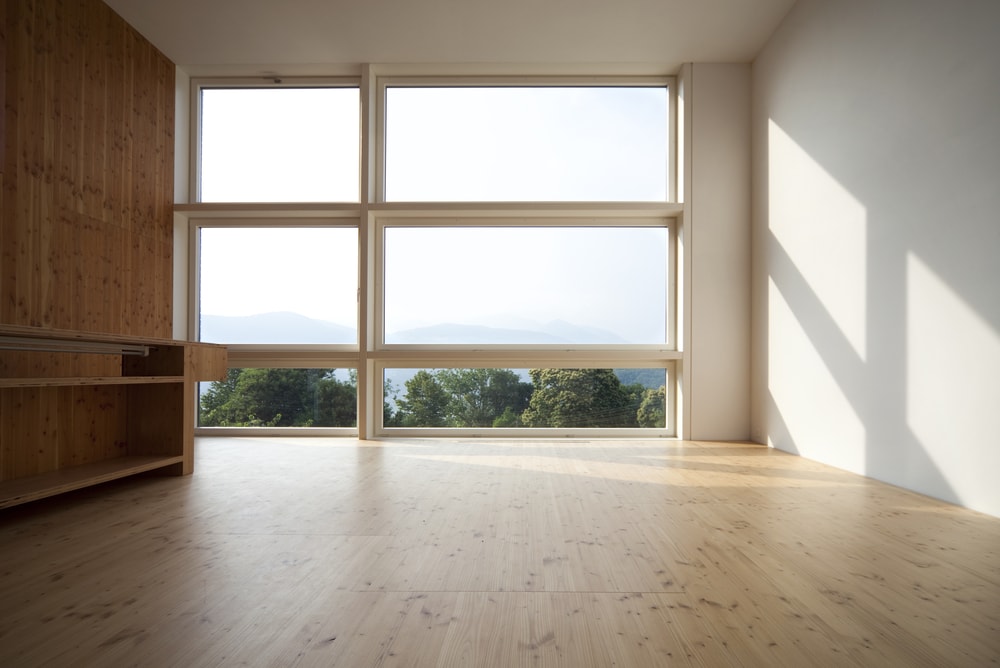Putting love back into your home as it ages is important for protecting your investment. Home improvement projects can help you keep your home structurally sound, comfortable, and energy efficient while boosting its curb appeal and value.
If your home’s windows are old or damaged, you’re likely starting to look into having them replaced as part of caring for your home. For many homeowners, this can become overwhelming because of the choices available and the terminology. You’ll see all sorts of ratings on there that will surely make your head spin. You may have been expecting to just pick a shape and style and call it a day, however, there are many other choices and factors to consider that will likely leave you feeling more confused in the process.
Perhaps the most critical consideration of all is the U-factor of the windows you choose, as you’ll want to make sure your home improvements provide added energy efficiency. Pinnacle Home Improvements offers innovative solutions for your home that focus on energy efficiency through high-quality windows that provide insulation and energy savings in an array of beautiful styles. This guide is meant to help you understand what U-factor is and why it is an important factor to consider when replacing the windows in your home.
Understanding Why U-Factor Is Important for Windows
When browsing through new window options, you will see “U-factor” listed on the features. Since replacing windows is primarily done for energy efficiency improvements and aesthetics, understanding what it relates to will help you find the right windows. U-factor is simply a metric that determines how much heat will escape through the windows in your home.
Quite simply, it is there to tell you how well your windows will prevent the loss of heat in your home, particularly from your HVAC system, which controls the temperature. In terms of comparative performance ratings, the U-factor is one of the four main components you need to understand. The National Fenestration Rating Council (NFRC) uses it to objectively test and certify glass for windows, doors, and skylights. Basically, it makes it easier for you to quickly see which windows are best for your home when you’re choosing replacement windows.
The Importance of U-Factor When Selecting Windows and Doors for Your Home
Energy costs have continued to rise, and coupled with the increases in cost of living across the board, homeowners need to be proactive to keep costs down. Taking the right steps to lower your energy costs starts with making the right investment into your home. When you choose the right U-factor for your windows and doors, you will prevent energy waste as well as the emission of more greenhouse gases into the atmosphere. Focusing on U-factor for your replacement windows and doors will allow you to save more energy. By saving energy, you’ll see lower energy bills, all without having to make changes that would compromise your comfort inside of your own home.
Additionally, saving energy on heating and cooling means that your HVAC system gets a break too. When your windows and doors aren’t energy efficient, it must work harder to create the same output. Putting more strain on this integral appliance will likely cause it to wear out before the end of its lifespan, leading to more frequent repairs until it finally breaks down for good and needs to be replaced. You can protect your family, savings, home, and appliances simply by checking the U-factor when you make your window and door selections and making sure that it’s the right match.
U-Factor vs R-Value: What’s the Difference?
If you’ve already started browsing different types of windows or other home improvement materials for your home, you may also see R-value listed on the labels. What does it mean, and how does it relate to the U-factor? They both relate to heat and insulation, though there are certainly some key differences to know.
The R-value measures how well different building materials can resist the flow of heat. The higher the R-value number, the better the material is for delivering thermal resistance. R-value is usually used as a basis of comparison for insulation properties of materials used in walls and flooring. As for U-factor, it measures the rate of heat loss or heat flow through windows. Windows that have a lower U-factor number listed on them are a better choice as this indicates there will be less heat loss.
Beneficial Features of Low U-Factor Windows
While there are other energy-efficient metrics to consider with your windows, narrow down your choices to those with low U-factor and you’ll reap the benefits:
Long-Term Energy Savings
Windows with low U-factor ratings will provide better insulation for your home. This will reduce the amount of heat that escapes from your home in the winter, which translates to lower energy bills. Limiting the escape of heat is also important for being more eco-friendly. Making this choice helps you reduce your carbon footprint by minimizing your carbon emissions.
Greater Interior Comfort
Windows with a low U-factor provide better control for your interior environment. You won’t be stuck with cold drafts of air that make your bundle up with added layers inside your home. You can relax with your family and enjoy the soothing comfort of your heat without wasting any of it.
Reduced Condensation
One benefit you may not realize is that low U-factor windows help prevent condensation from developing on your windows. In time, condensation can cause moisture-related issues for the windows frames, leading to mold growth. Mold can destroy your window frames and spread through your home, potentially causing health issues for you and your family. By choosing windows that provide greater protection for your home, you can avoid expensive damage and protect your health too.
Energy-Efficient Windows with the Right U-Factor Provided by Pinnacle Home Improvements
If you’re looking to replace the windows in your home, you must understand the U-factor ratings to make the right choice among all the energy saving window options. You should know that this score is assigned to the entire window unit, not just the glass. It also includes the window frame in the rating, as it is essential to providing insulation for your home.
At Pinnacle Home Improvements, we have a wide selection of energy-efficient windows, including Energy Star windows in the most coveted designs and styles that will elevate your home. As you review these window options, you should get familiar with other parts of the window to pick the best fit for your needs.
Window Frames
When you’re trying to upgrade the energy efficiency in your home through a window replacement, one of your focal points needs to be with the window frames. Window frames come in a variety of materials, and some of them will have lower thermal conductivity to help you insulate your home and provide greater energy savings.
Vinyl is an excellent window frame material as it is revered for its ability to insulate while being cost-effective. Fiberglass is another stable material that is well-suited for window frames. It typically features air cavities that can be filled with insulation, which tends to provide unmatched thermal performance.
If you favor wood, it has natural insulation properties. It’s also aesthetically pleasing, though on the downside, you will need to work harder to maintain this material over the years as it is more prone to wood rot. Another option would be composite as it can mimic the look of wood while providing insulation and durability with lower maintenance.
Aluminum is also a material used in window frames as it is strong and low-maintenance, however, it conducts heat more easily, which can work against your energy efficiency efforts. If you choose aluminum frames with thermal breaks, they can improve U-factor. Not sure which material will suit your home best? We can help guide you through all your options, allowing you to make sure you make the best selection.
Gas Layers
Most older windows are single-pane windows, and they are the biggest source of energy waste in a home. Replacing them with double or even triple-glazed options is ideal. When you choose double-glazed windows, you get an added boost of insulation for your home through two layers of glass. These glass layers are separated by a section filled with non-toxic gas, usually argon, that helps provide better insulation and climate control in your home.
The more glass layers, the better a window is for preventing the transfer of heat. While double-glazed, or double pane, windows are a great choice, if you plan to live in your home for decades to come, you may want to consider triple pane windows. These will provide three layers of glass and two gas fills, though they are more expensive.
Some homeowners put triple pane windows on the windows of their home that get the most sun exposure and use double pane windows on the rest of their home. We can evaluate what would work best for your home to help you maximize your energy efficiency and savings while staying within your budget.
Low-E Coatings
Low-E coatings allow you to enhance your insulation and energy efficiency even more. You can have these coatings added to your window glass, allowing greater control over solar radiation. It serves to reflect shortwave infrared radiation caused by the sunlight as it enters your home. Low-E coatings also help with longwave infrared radiation, which is the heat that is absorbed and emitted from all of the appliances that create heat inside your home.
Low-E coatings can feel overwhelming since they can be customized in a variety of ways. Don’t let it overwhelm you; Pinnacle Home Improvements is here to help determine the best Low-E coatings to suit the style of your home and your local climate. With these coatings, you’ll also improve the U-factor, making them even more energy efficient.
Other Tips for Improving Energy-Efficiency in Your Home with U-Factor
When you’re seeking an improved home environment, knowing which upgrades to make in terms of home improvements and your daily habits can make a difference. Choosing energy efficient windows is just one part of the equation.
Add Insulation
Adding insulation where it is needed in your home is a great way to reduce heat loss. Your attic, around your fixtures, and other parts of your home can develop air leaks that compromise energy efficiency. Since windows and doors too are the biggest areas for air leaks, swapping your windows out for ones with the right U-factor for your local climate and building codes will also help.
Choose the Right Window Coverings
You can also update the style and functionality of your home by choosing the right window coverings. Thermal curtains can help keep excess sunlight out of your interior on hotter days. Window blinds come in a variety of options that can filter in light without obstructing it. These measures add a touch of style to your home while helping you with energy efficiency. However, getting to the root of the problem by replacing your windows ensures better safety, security, and energy savings for you.
Install a Smart Thermostat
Smart thermostats have grown in popularity over the years because they allow homeowners to gain better control of their interior temperature. They can adjust based on time of day or current occupancy, and can be programmed for certain rooms as well. In this way, you can fine-tune your heating and cooling needs, even when you’re far from home, allowing you to stop wasting energy and start saving.
Above all, working with home improvement experts will allow you to consider all the ways in which you can improve your home for greater functionality, structural integrity, aesthetics, comfort, and enjoyment. When you need to replace your windows, update your roofing, install siding and insulation, or make other improvements for your home’s structural needs or energy efficiency, contact Pinnacle Home Improvements. You can request a free quote to learn more about upgrading your windows to selections that have an appropriate U-factor rating to enhance your home.














